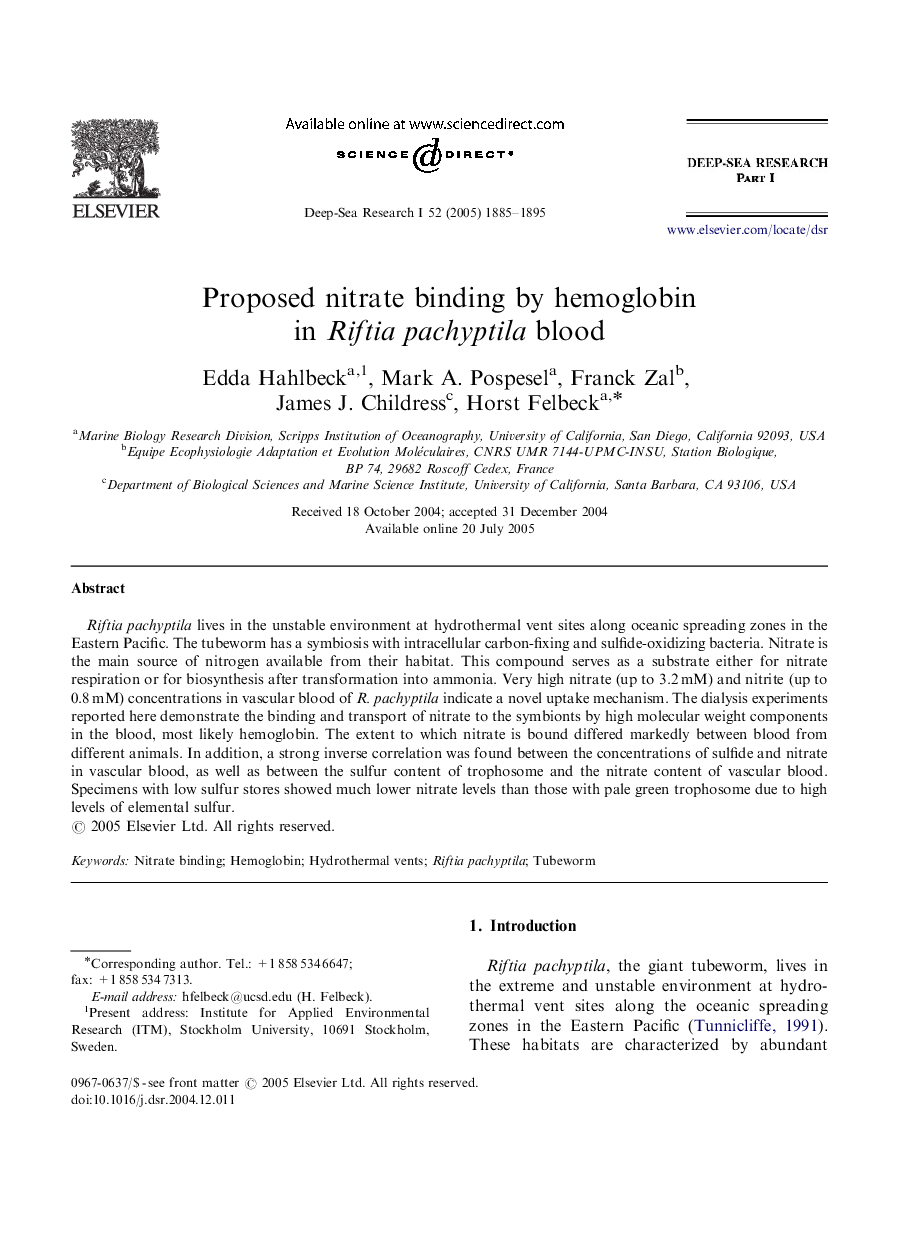| Article ID | Journal | Published Year | Pages | File Type |
|---|---|---|---|---|
| 9479569 | Deep Sea Research Part I: Oceanographic Research Papers | 2005 | 11 Pages |
Abstract
Riftia pachyptila lives in the unstable environment at hydrothermal vent sites along oceanic spreading zones in the Eastern Pacific. The tubeworm has a symbiosis with intracellular carbon-fixing and sulfide-oxidizing bacteria. Nitrate is the main source of nitrogen available from their habitat. This compound serves as a substrate either for nitrate respiration or for biosynthesis after transformation into ammonia. Very high nitrate (up to 3.2Â mM) and nitrite (up to 0.8Â mM) concentrations in vascular blood of R. pachyptila indicate a novel uptake mechanism. The dialysis experiments reported here demonstrate the binding and transport of nitrate to the symbionts by high molecular weight components in the blood, most likely hemoglobin. The extent to which nitrate is bound differed markedly between blood from different animals. In addition, a strong inverse correlation was found between the concentrations of sulfide and nitrate in vascular blood, as well as between the sulfur content of trophosome and the nitrate content of vascular blood. Specimens with low sulfur stores showed much lower nitrate levels than those with pale green trophosome due to high levels of elemental sulfur.
Related Topics
Physical Sciences and Engineering
Earth and Planetary Sciences
Geology
Authors
Edda Hahlbeck, Mark A. Pospesel, Franck Zal, James J. Childress, Horst Felbeck,
